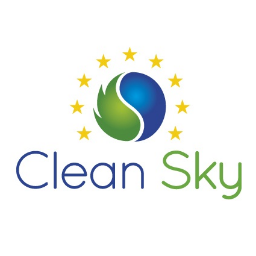
A regional airliner or a feederliner is a small airliner that is designed to fly up to 100 passengers on short-haul flights, usually feeding larger carriers' airline hubs from small markets. This class of airliners is typically flown by the regional airlines that are either contracted by or subsidiaries of the larger airlines. Regional airliners are used for short trips between smaller towns or from a larger city to a smaller city. Feederliner, commuter, and local service are all alternative terms for the same class of flight operations.

Safran S.A. is a French multinational company that designs, develops and manufactures aircraft engines, rocket engines as well as various aerospace and defense-related equipment or their components. It was formed by a merger between SNECMA and the defense electronics specialist SAGEM in 2005. Safran's acquisition of Zodiac Aerospace in 2018 significantly expanded its aeronautical activities.

A blended wing body (BWB), also known as blended body, hybrid wing body (HWB) or a lifting aerofoil fuselage, is a fixed-wing aircraft having no clear dividing line between the wings and the main body of the craft. The aircraft has distinct wing and body structures, which are smoothly blended together with no clear dividing line. This contrasts with a flying wing, which has no distinct fuselage, and a lifting body, which has no distinct wings. A BWB design may or may not be tailless.

An electric aircraft is an aircraft powered by electricity. Electric aircraft are seen as a way to reduce the environmental effects of aviation, providing zero emissions and quieter flights. Electricity may be supplied by a variety of methods, the most common being batteries. Most have electric motors driving propellers or turbines.

Aurora Flight Sciences is an American aviation and aeronautics research subsidiary of Boeing which primarily specializes in the design and construction of special-purpose Unmanned aerial vehicles. Aurora has been established for 20+ years and their headquarters is at the Manassas Regional Airport in Manassas, Virginia.

The Clean Sky Joint Undertaking (CSJU) is a public-private partnership between the European Commission and the European aeronautics industry that coordinates and funds research activities to deliver significantly quieter and more environmentally friendly aircraft. The CSJU manages the Clean Sky Programme (CS) and the Clean Sky 2 Programme (CS2), making it Europe's foremost aeronautical research body.

The Bye Aerospace eFlyer 2 is a light electric aircraft designed and under development by Bye Aerospace of Denver, Colorado.

The NASA X-57 Maxwell was an experimental aircraft being developed by NASA, intended to demonstrate technology to reduce fuel use, emissions, and noise. The first flight of the X-57 was scheduled to take place in 2023, but the program was cancelled due to problems with the propulsion system.

Wright Electric is an American startup company developing an electric airliner.
The Airbus/Rolls-Royce/Siemens E-Fan X was a hybrid electric aircraft demonstrator being developed by a partnership of Airbus, Rolls-Royce plc and Siemens. Announced on 28 November 2017, it followed previous electric flight demonstrators towards sustainable transport for the European Commission’s Flightpath 2050 Vision. A BAe 146 flying testbed was to have one of its four Lycoming ALF502 turbofans replaced by a Siemens 2 MW (2,700 hp) electric motor, adapted by Rolls-Royce and powered by its AE2100 turboshaft, controlled and integrated by Airbus with a 2 t (4,400 lb) battery. In April 2020, the programme was cancelled during the COVID-19 pandemic.
magniX is an electric motor manufacturer for electric aircraft, wholly owned by Singapore investor Clermont Group. The company is headquartered in Everett, Washington, United States.

The VoltAero Cassio is a family of hybrid electric aircraft being developed by startup company VoltAero. The company plans to produce three configurations of the Cassio aircraft: the four-place Cassio 330, the six-place Cassio 480, and the ten-place Cassio 600.
A hybrid electric aircraft is an aircraft with a hybrid electric powertrain. As the energy density of lithium-ion batteries is much lower than aviation fuel, a hybrid electric powertrain may effectively increase flight range compared to pure electric aircraft. By May 2018, there were over 30 hybrid electric aircraft projects, and short-haul hybrid-electric airliners were envisioned from 2032.
The Ampaire Electric EEL is a hybrid electric aircraft developed by U.S. startup Ampaire, established in Hawthorne, California. The forward piston engine of a Cessna 337 Skymaster is replaced by an electric motor powered by a battery, in a parallel hybrid configuration. The demonstrator first flew on 6 June 2019.

The Scylax E10 is a 10-seat all-electric aircraft project by German start-up Scylax Aircraft.
An electric vertical take-off and landing (eVTOL) aircraft is a variety of VTOL aircraft that uses electric power to hover, take off, and land vertically. This technology came about thanks to major advances in electric propulsion and the emerging need for new aerial vehicles for urban air mobility that can enable greener and quieter flights. Electric and hybrid propulsion systems (EHPS) have also the potential of lowering the operating costs of aircraft.
The Safran EngineUS is a family of electric motors for aircraft propulsion developed by Safran, outputting up to 500 kW (670 hp).

Project Fresson is the development by Cranfield Aerospace of an electric propulsion system for the over 700 BN-2 Islanders currently operated, supported by Britten-Norman.
The Boeing X-66 is an experimental airliner under development by Boeing. It is part of the X-plane series, and has been developed in collaboration with NASA and its Sustainable Flight Demonstrator program. It will use extra-long, thin wings stabilized by diagonal struts, which is known as a Transonic Truss-Braced Wing concept. The aircraft configuration is based on research studies referred to as "Subsonic Ultra-Green Aircraft Reach (SUGAR)" which extensively studied truss-bracing and hybrid electric technologies.

Marty Bradley is an American aerospace engineer who specializes in advanced propulsion, electric aircraft, and sustainable aviation. He is a fellow of the American Institute of Aeronautics and Astronautics (AIAA), an adjunct professor of aerospace and mechanical engineering practice at the University of Southern California (USC), and a sustainable aviation consultant.














